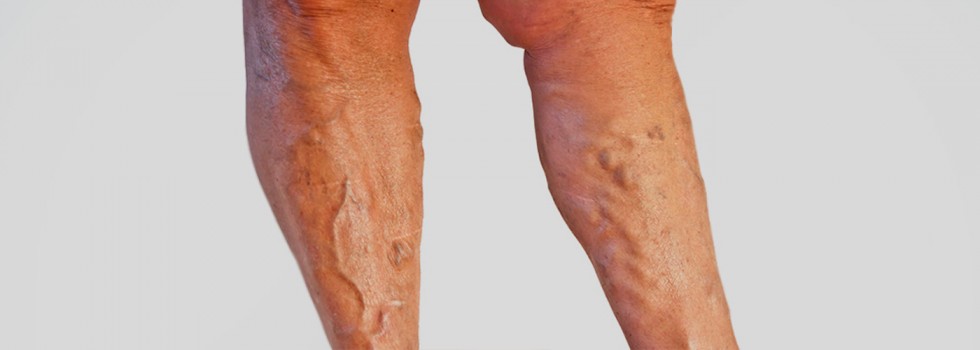Varicose Veins
What are Varicose Veins?
Varicose veins can, in some cases, be purple or blue and can appear coiling and bulging. Some people with varicose veins experience pain or discomfort. Varicose veins usually develop on the legs, often on the back of the calf, thigh or on the shin and inside of the leg. As varicose veins progress and weaken under the persisting strain, they get bigger and bloat outward. Approximately 3 in 10 people develop varicose veins during their lives. They can occur in both men and women although it is more commonly noted in women due to their possible development in pregnancy or childbirth. Many people with varicose veins do not have an underlying disease and they can occur for a multitude of reasons such as genetic inheritance, obesity, trauma or routinely standing for long periods. Varicose veins may also indicate further health concerns.
UNTREATED VARICOSE VEINS CAN PROGRESS AND COMPLICATE INTO CHRONIC VENOUS INSUFFICIENCY (CVI) WITH DEBILITATING SYMPTOMS OF VENOUS ULCERATION, OEDEMA, ECZEMA, SKIN LESIONS, HYPERPIGMENTATION AND VENOUS DERMATITIS.
Varicose Veins Causes
-
GENETIC INHERITANCE
-
PREGNANCY
-
CHILD BIRTH
-
AGING
-
TRAUMA
-
OBESITY
-
STANDING FOR LONG PERIODS
The causes of varicose veins may be primary, secondary, or hereditary, although the exact cause of the development of varicose veins will always be difficult to pinpoint. Varicose veins of primary cause develop as a result of an inherent weakness in the wall of the vein. Varicose veins can have a hereditary factor and often occur in several members of the same family. Varicose veins that develop after trauma or deep vein thrombosis are of secondary cause. Other hereditary varicose veins develop due to disorders in the natural development of the venous system, and usually are part of a vascular malformation in the limb, present at birth. No matter the cause, defective venous valves cause blood to pool in the leg, leading to increased pressure in the veins. This may result in further enlargement of the varicose veins, increasing the likelihood of symptoms, and causing complications such as skin changes, impaired mobility and ulcer formation.
Varicose Veins Treatment
Varicose veins are treated with changes in lifestyle and medical procedures. The aim of treatment is to relieve symptoms, reduce their progression, prevent complications, improve the cosmetic appearance of legs, as well as, the general quality of life for sufferers. If varicose veins cause few symptoms, our doctor may simply suggest making lifestyle changes. If your symptoms are more severe, Dr. Popov may recommend one or more medical procedures. For example, you may need a medical procedure if you have a lot of pain, swelling, discomfort, blood clots, or skin disorders caused by the varicose veins of your leg(s). More immediate and permanent relief of varicose veins is often achieved through interventional medical procedure. With advancements in technology, vein treatments can be performed with minimal discomfort to the patient and a very fast recovery.
The best known and the most effective treatments include Sclerotherapy and Radiofrequency Ablation (RFA). After treatment you should no longer have varicose veins (diseased Great and Small Saphenous veins) and your symptoms may improve almost immediately and will continue to gradually improve for 6 months to one year. Where permanent damage and established skin changes such as scarring and permanent spider veins are too great, they will not improve without further medical intervention after surgery. However, much of the affected areas will show significant cosmetic and symptomatic improvement. This is especially observable where the patient has developed secondary symptoms resulting from varicose veins, such as, eczema, ulceration and some spider veins.
The effects of such damage will be greatly reversed after the cause of the problem has been addressed with treatment. Some redness due to irritation of the skin will go away. These procedures are performed internally, and are by far removed from plastic surgery. The treatment typically arises out of medical necessity, although, purely cosmetic cases can also be treated with sclerotherapy. It is therefore important to have realistic expectations about the final result as treatment is focused on improving the quality of life rather than focusing on the aesthetic results, although patients can expect huge cosmetic benefits.


